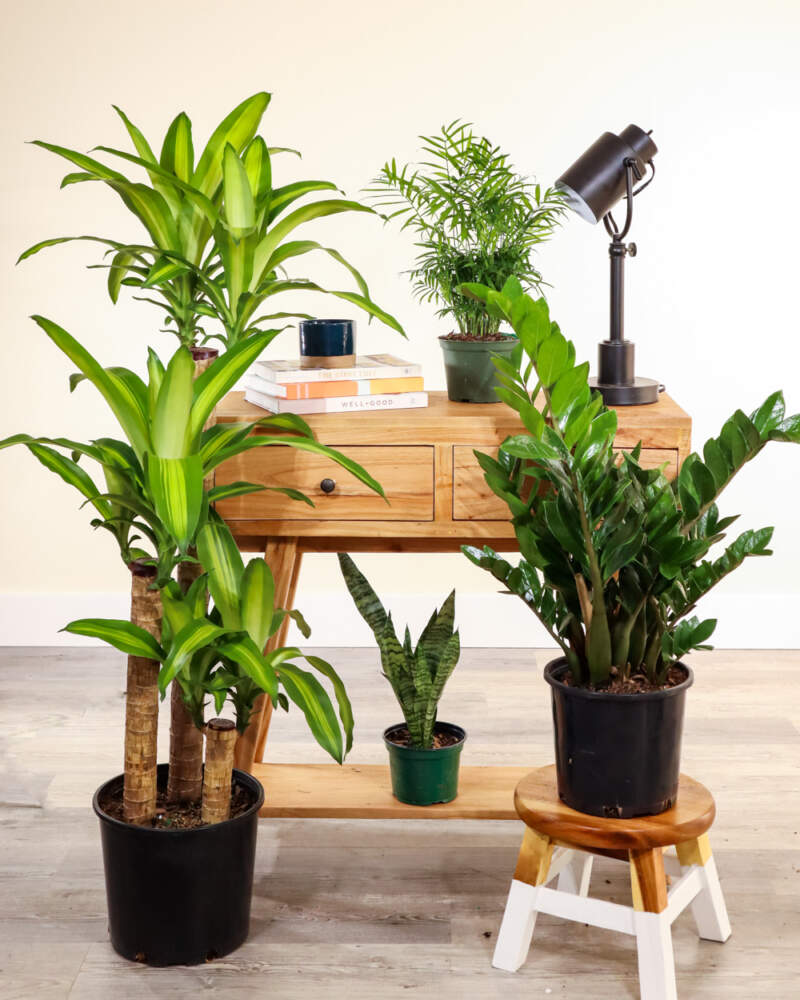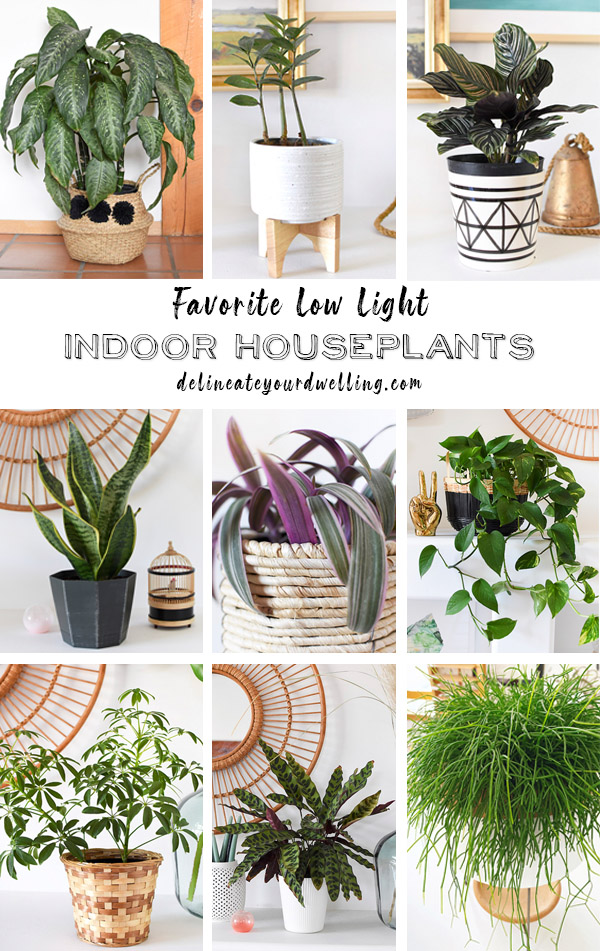How to Care for the Best Low-Light Indoor Plants in Any Environment
How to Care for the Best Low-Light Indoor Plants in Any Environment
Blog Article
Check Out the One-of-a-kind Benefits of Low-Light Indoor Plants for Your Living Area
Including low-light indoor plants right into your space provides a plethora of benefits that extend far past plain aesthetics. These sturdy plants not just prosper in environments with limited sunlight however likewise offer vital functions such as air purification and humidity improvement. They can positively influence your mood and overall health while requiring minimal maintenance. As you consider the transformative potential of these plants, it becomes vital to check out exactly how their distinct features can tailor your setting to far better offer your way of living. What details advantages might reverberate most with your personal space?
Air Filtration Benefits
Low-light indoor plants not just improve the aesthetic allure of living areas but additionally play a considerable role in air purification. Study has actually demonstrated that particular plant species can properly eliminate common indoor toxins, consisting of benzene, formaldehyde, and trichloroethylene. These substances commonly rise from family products such as furniture, cleaning items, and building materials, adding to indoor air quality problems.
Plants such as the serpent plant, pothos, and peace lily are specifically proficient at filtering system damaging materials from the air while growing in low-light conditions. The procedure of phytoremediation, in which plants take in and metabolize toxic substances, makes it possible for these species to contribute significantly to a much healthier interior environment. Furthermore, via photosynthesis, plants release oxygen, additionally boosting air quality.
Integrating low-light indoor plants right into home or office areas not only supplies visual advantages but also offers as a useful method for boosting air top quality. By picking the right species, individuals can create a setting that advertises health and reduces exposure to harmful contaminants, making these plants an essential element in modern interior living.

State Of Mind Enhancement Results
Countless researches have actually revealed that integrating indoor plants can considerably enhance mood and general psychological well-being. The visibility of plant in indoor environments has actually been connected to decreased anxiety degrees, enhanced sensations of peace, and enhanced emotional wellness. Low-light indoor plants, in specific, thrive in atmospheres where natural light is restricted, making them best for different living spaces.
Study suggests that communicating with plants can stimulate the release of serotonin, a neurotransmitter linked with sensations of happiness and health. Furthermore, the act of caring for plants promotes a sense of duty and success, additional adding to positive mental health and wellness outcomes. In addition, low-light plants such as snake plants, pothos, and tranquility lilies have been revealed to boost air high quality, which is inherently linked to state of mind enhancement.
Incorporating these plants into your home or workplace can produce a calm environment, using a aesthetic and sensory retreat from the hustle and bustle of life - Best low-light indoor plants. As people invest raising quantities of time indoors, the mood-enhancing effects of low-light interior plants become even a lot more essential, supplying not just aesthetic appeal however additionally an extensive influence on emotional wellness
Low Upkeep Requirements
For those seeking to improve their interior rooms without a substantial time commitment, low-light indoor plants official site are an excellent selection due to their reduced maintenance demands. These resistant plants grow in less-than-ideal lights problems, making them excellent for offices and homes where natural sunshine is restricted.

Pest resistance is another advantage of low-light indoor plants. Many selections are much less at risk to typical pests, lowering the requirement for constant surveillance and treatment. Additionally, these plants generally expand much more slowly than their high-light equivalents, implying much less regular repotting and trimming are needed.
Visual Appeal and Adaptability

Furthermore, these plants can be arranged in myriad methods, whether in groups for a lush effect or as standalone features to attract the eye. The selections of planter designs-- from smooth ceramic pots to rustic wooden containers-- further enhance their visual worth, enabling house owners to reveal their personal design.
Additionally, low-light plants can be tactically placed in locations that might otherwise really feel neglected, such as edges or dimly lit shelves, therefore maximizing their decorative possibility. Eventually, the combination of their striking look and convenience makes low-light indoor plants a valuable enhancement to any home, creating a welcoming atmosphere that advertises well-being and leisure.
Improved Moisture Levels
Enhancing interior humidity degrees is one of the substantial benefits of incorporating low-light interior plants into living areas. These plants naturally launch moisture vapor with a procedure understood as transpiration, which takes place when water taken in by the origins moves through the plant and vaporizes from the leaves. This procedure not only boosts humidity however also adds to a much healthier indoor atmosphere.
Better humidity degrees can reduce numerous health and wellness issues, such as completely dry skin, respiratory system problems, and allergies. Several individuals experience discomfort in dry indoor conditions, especially throughout winter months when heating unit remain in use. By tactically placing low-light plants throughout your home, you can produce a much more well balanced moisture degree that fosters overall wellness.
In addition, particular low-light interior plants, like peace lilies and spider plants, are specifically reliable at boosting humidity (Best low-light indoor plants). Thus, low-light interior plants offer both aesthetic and functional purposes, promoting a much healthier environment.
Conclusion
In summary, low-light interior plants use various benefits that add to a healthier and more welcoming living area. Their ability to purify the air, improve mood, and boost humidity degrees highlights their value as reliable design elements. browse around this web-site Their reduced maintenance requirements and aesthetic versatility make them ideal for different environments. Incorporating these durable plants right into indoor setups not only raises the atmosphere however likewise advertises overall wellness, establishing a peaceful refuge for locals.
Plants such as the over at this website serpent plant, pothos, and peace lily are particularly skilled at filtering system damaging materials from the air while growing in low-light conditions. Low-light plants such as serpent plants, pothos, and tranquility lilies have actually been revealed to boost air quality, which is intrinsically linked to mood enhancement.
Low-light indoor plants, such as snake plants, pothos, and ZZ plants, not only enhance the visual landscape of a space yet also introduce different structures and tones of green that can complement diverse interior designs. These plants normally release wetness vapor via a process understood as transpiration, which occurs when water absorbed by the origins moves with the plant and evaporates from the fallen leaves.Moreover, specific low-light indoor plants, like peace lilies and spider plants, are particularly effective at increasing moisture.
Report this page